9 Key Outsourcing Statistics, Facts & Trends
- Updated: Aug 29, 2024
- 5 min
Outsourcing has become a widespread business practice that allows companies to enhance their efficiency, lower costs, and concentrate on their core competencies.
As we head into 2025, the global outsourcing market is constantly changing, driven by technological advancements, economic shifts, and evolving workforce dynamics.
In this article, we share the latest 9 outsourcing statistics, facts, and trends, providing insights for businesses that are considering outsourcing as a strategic step toward their growth.
Curious about where app development is headed? Our application development trends guide has the answers.
Transform your ideas into reality with top-tier software developers — contact us to get started!
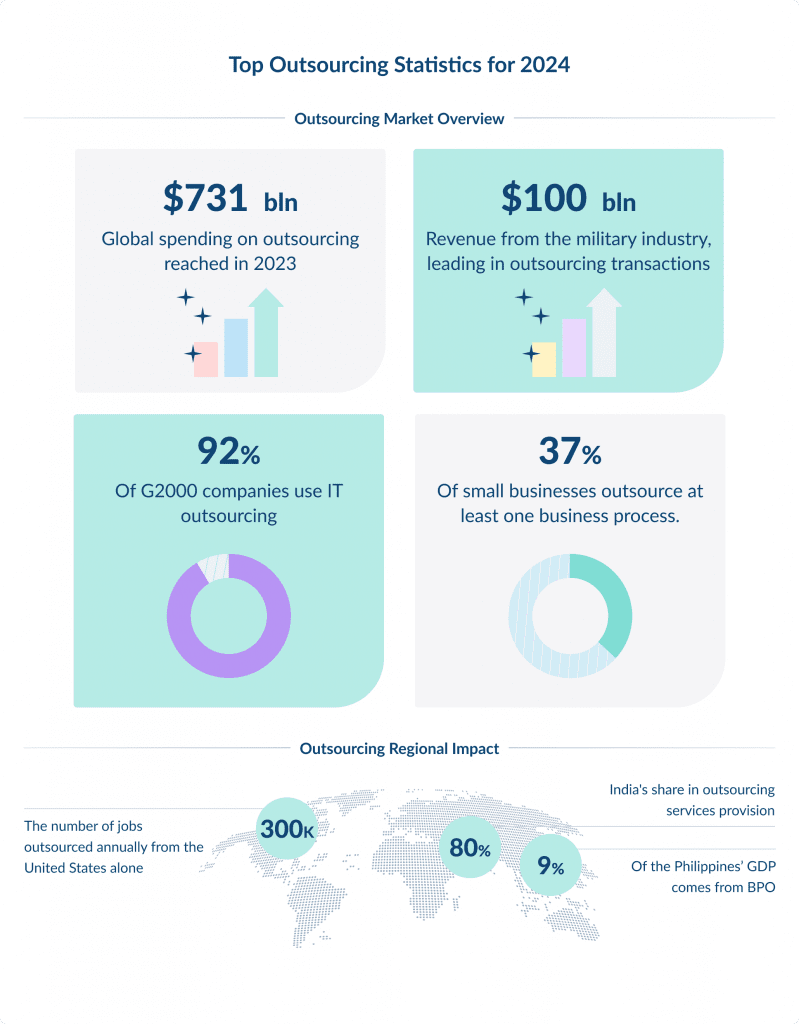
Top Outsourcing Statistics for 2025
- Global spending on outsourcing reached an estimated $731 billion in 2023.
- 92% of G2000 companies use IT outsourcing.
- 37% of small businesses outsource at least one business process.
- Around 300,000 jobs are outsourced annually from the United States alone.
- India provides 80% of outsourcing services.
- 9% of the Philippines’ GDP comes from business process outsourcing.
- The military industry accounts for the most significant outsourced transactions, earning $100 billion in income.
1. Increased Adoption of Agile Methods
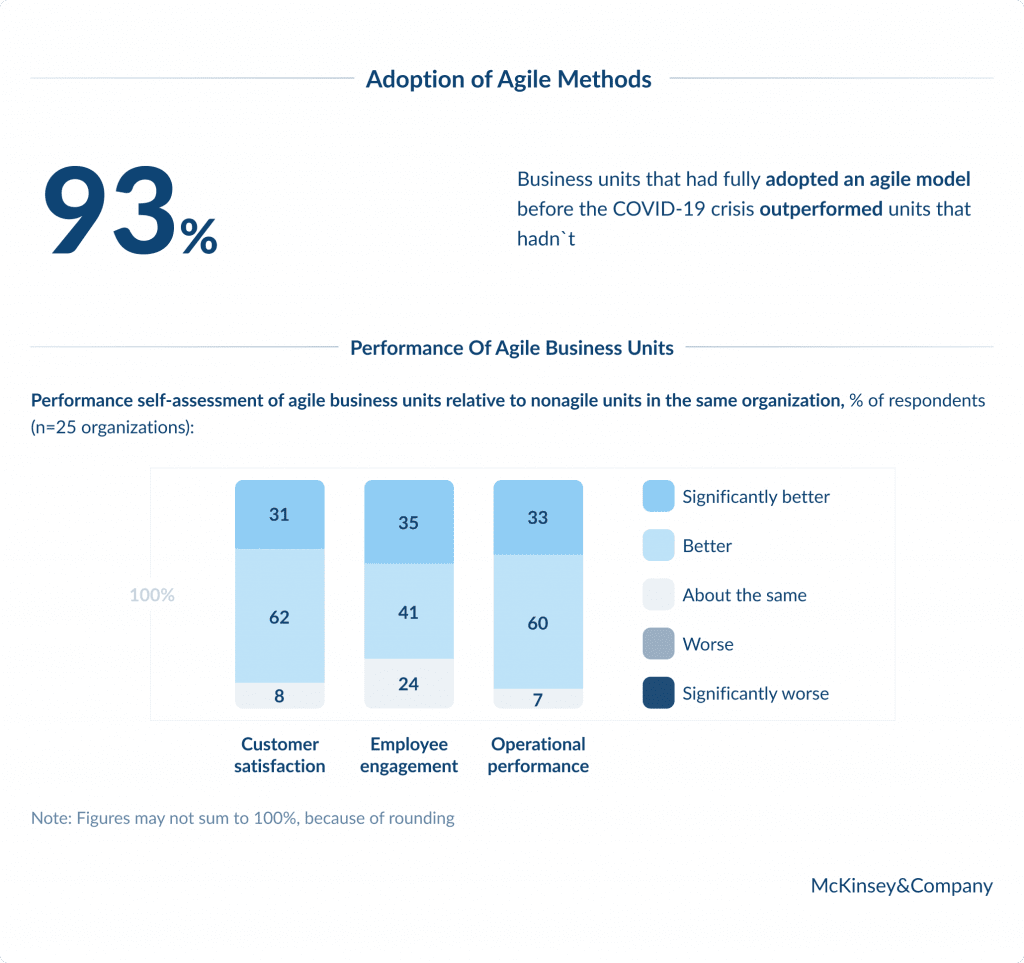
Agile methods in project management and software development have become increasingly popular in recent years, with a projected 71% of companies expected to report using Agile approaches by the end of 2023.
For efficient task handling, here are the best project management software options available today.
Agile methodologies are known for their flexibility, responsiveness to change, and focus on customer satisfaction, and are recognized for their ability to improve project outcomes and team productivity.
Research suggests that Agile projects are three times more likely to succeed than those managed with traditional methodologies.
As businesses strive for greater adaptability and faster time to market, adopting Agile is expected to continue growing, with an estimated 80% of all software projects anticipated to utilize Agile practices by 2026.
2. Rise of Crowdsourcing
Crowdsourcing has become an increasingly popular tool for businesses and individuals alike.
By harnessing a global community’s collective intelligence and skills, crowdsourcing can facilitate innovation, problem-solving, and funding.
It’s no surprise that the crowdsourcing market is expected to grow by 28% between 2024 and 2026 as more and more companies turn to crowdsourcing for various tasks, from data entry and idea generation to complex problem-solving.
Crowdsourcing platforms, such as Kickstarter and Indiegogo, have collectively raised over $5 billion for projects and startups, effectively democratizing access to resources and expertise.
Supercharge Your Team with Top IT Talent.
3. Greater Use of AI and Automation
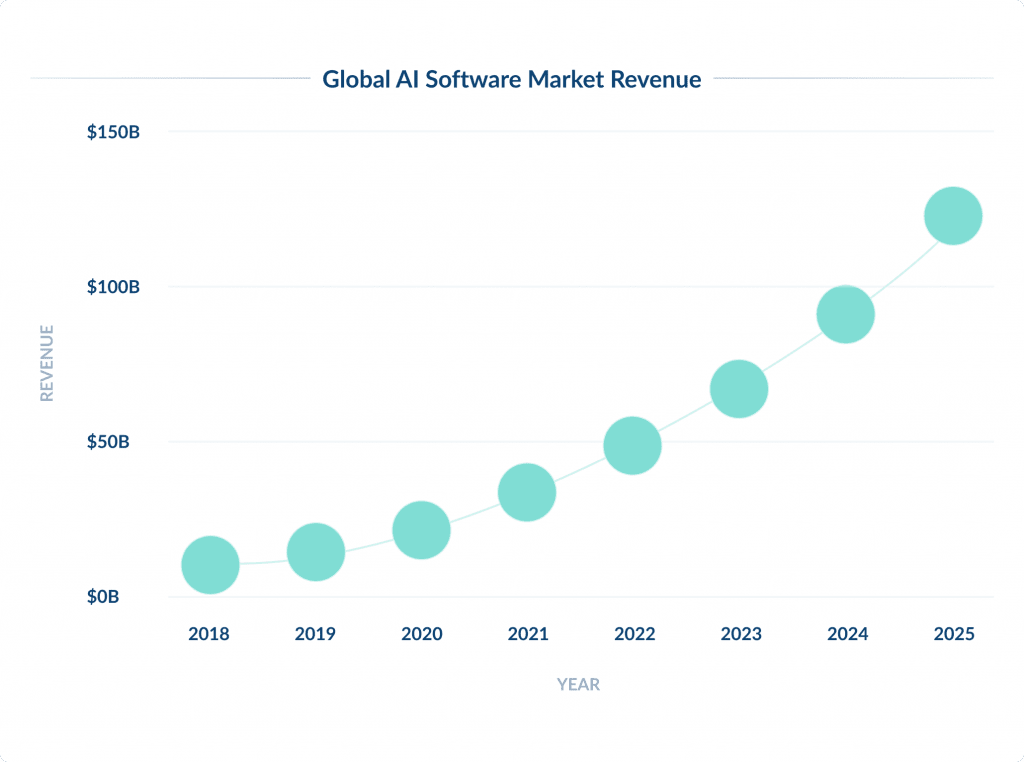
Artificial Intelligence (AI) and automation technologies are changing how industries operate by improving efficiency, reducing human error, and opening up new opportunities for innovation.
The global AI market is expected to reach $1.8 trillion by 2030, with automation technologies playing a key role in driving this growth.
To navigate the world of AI, it’s important to know the language. Our AI glossary offers concise explanations for key terms.
AI applications in data analytics, customer service, and predictive maintenance are projected to save businesses over $2 trillion in efficiencies by 2025.
Additionally, 85% of executives believe AI will give their companies a competitive advantage.
4. Adoption of Internet of Things
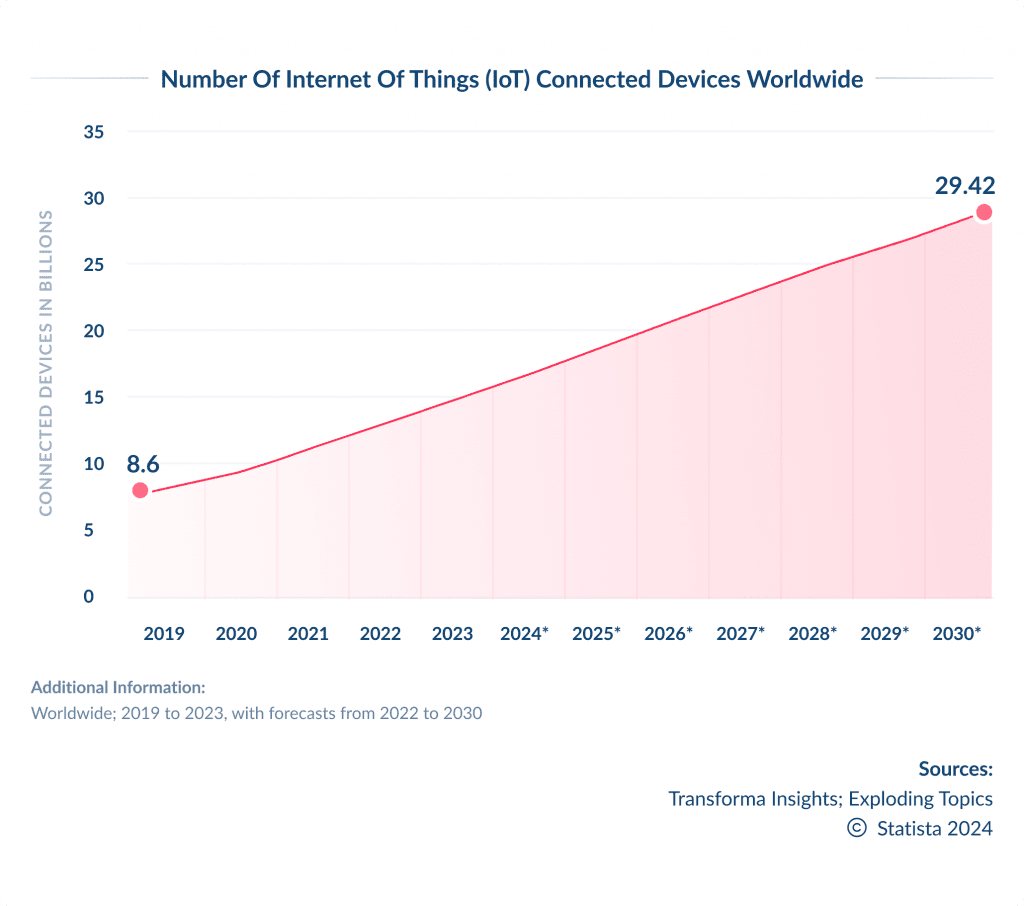
The Internet of Things (IoT) is rapidly expanding in the US, with the number of connected devices expected to exceed 29 billion by 2030.
The increasing demand for smart home devices, industrial automation, and connected healthcare startups is driving this growth.
The IoT market is projected to generate over $1.38 trillion in revenue by 2024, with significant investments in IoT technologies across sectors aiming to improve operational efficiency, enhance customer experiences, and drive innovation.
5. Expansion of Robotic Process Automation
Robotic Process Automation (RPA) is a technology transforming how businesses operate.
By automating routine, repetitive tasks, RPA allows employees to focus on higher-value work, significantly enhancing productivity and cost efficiency.
Unsurprisingly, the RPA market is expected to reach $3 billion by 2023, reflecting a compound annual growth rate (CAGR) of over 30%.
Organizations implementing RPA report a 40-75% reduction in processing time for tasks such as invoice processing, data entry, and customer onboarding, making it a valuable tool for businesses looking to streamline their operations.
6. Increased Focus on Quality Assurance
The importance of quality assurance (QA) in software development and IT services has been gaining more attention lately.
Businesses recognize that delivering defect-free products is essential for maintaining competitiveness and customer satisfaction.
The QA and testing services market is expected to reach $90.39 billion globally by 2030 due to the growing demand for robust, secure, high-performing software applications.
The adoption of automated testing tools is also increasing, as 90% of QA professionals use or plan to use automation in their testing processes.
7. Growth of Remote Working Models
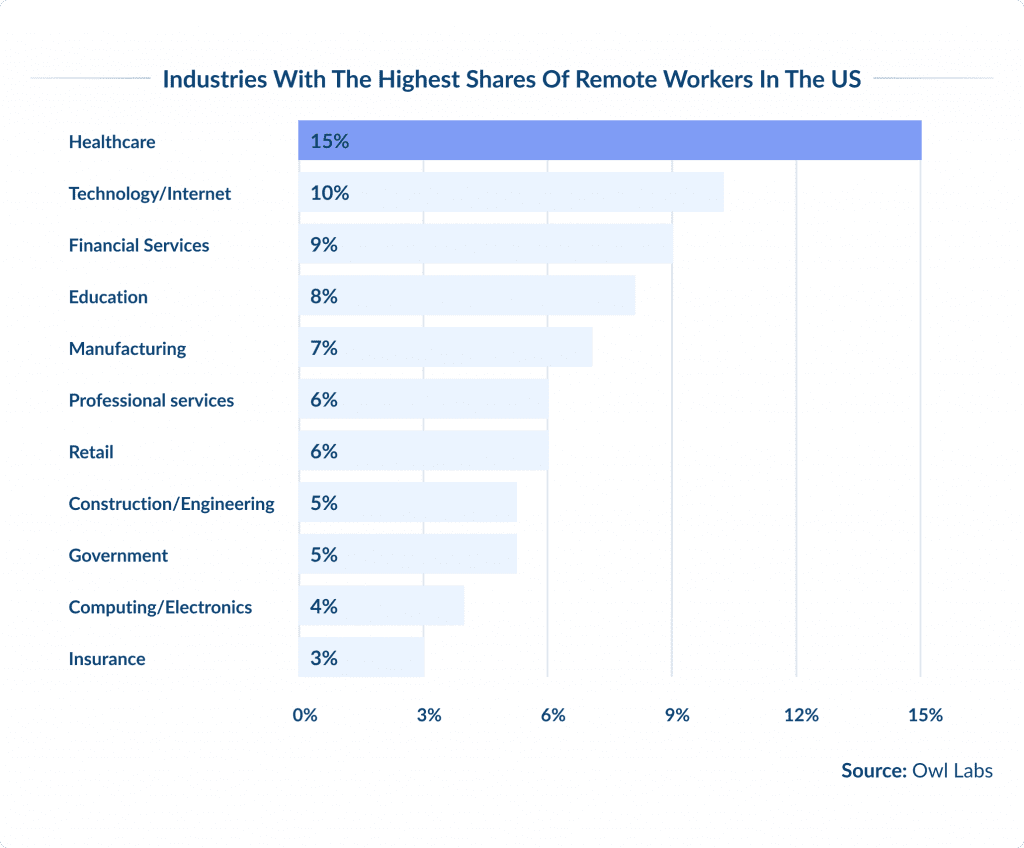
The remote work trend has gained traction, with more and more companies adopting this model.
By 2026, it is expected that around 22% of the US workforce will be working remotely at least part-time.
This shift is made possible by technological advancements and is driven by the demand for work-life balance, reduced commuting times, and access to a wider pool of talent.
Companies that offer remote work options report a 25% lower employee turnover rate and a 22% increase in productivity, highlighting the advantages of flexible working arrangements for employers and employees.
Need a remote team to support your project? Check out our guide on how to hire a dedicated remote team for top results.
Building Websites That Inspire and Engage.
8. Compliance with Data Protection Laws
As businesses generate more and more data, the need for data protection has become increasingly important.
There is a growing awareness of privacy concerns, and compliance with data protection laws has become a critical priority.
For instance, the General Data Protection Regulation (GDPR) in the European Union and similar regulations worldwide have set new standards for data privacy, imposing strict penalties for non-compliance.
The trend towards greater data protection is expected to continue as more people become covered under modern privacy regulations.
It is estimated that by the end of 2025, 65% of the world’s population will be covered, up from just 10% in 2020.
9. Greater Need for Soft Skills
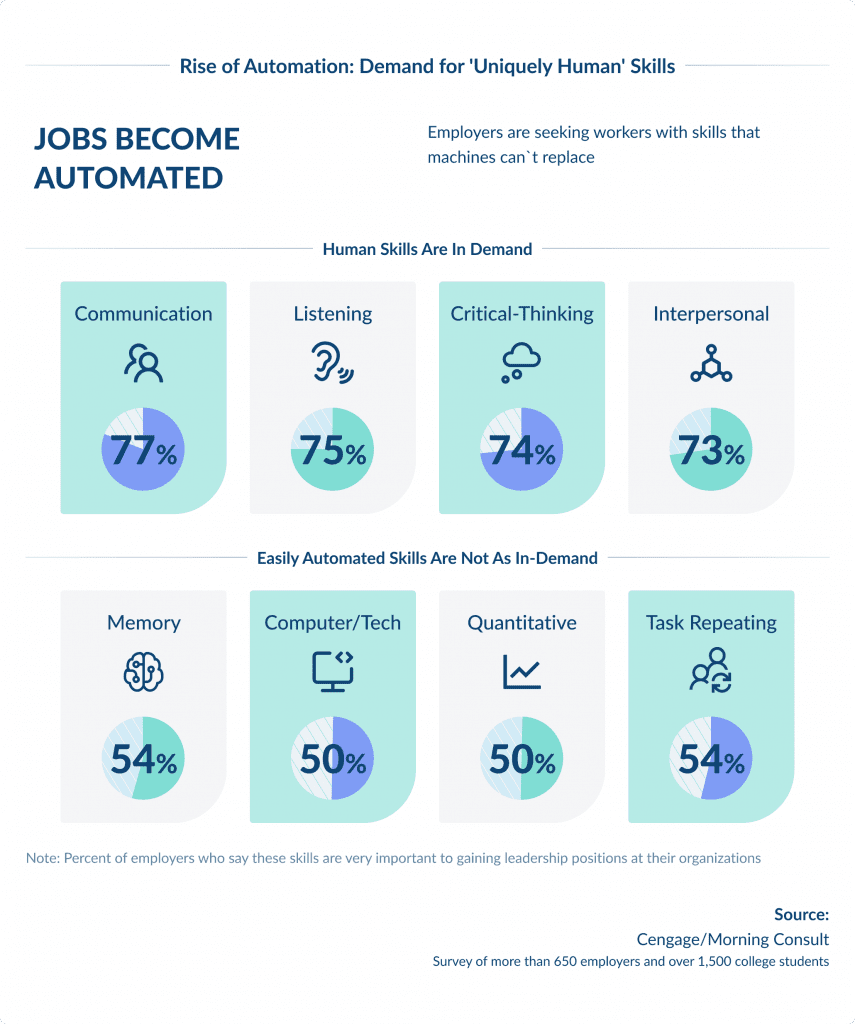
In today’s job market, the importance of soft skills such as communication, problem-solving, and adaptability is gaining recognition.
Despite the growing prevalence of automation and AI, these skills are still considered crucial for fostering innovation, teamwork, and customer service.
A recent LinkedIn survey revealed that 92% of hiring professionals view soft skills as equally or more important than technical skills, with 80% stating that soft skills are becoming increasingly important to a company’s success.
This trend highlights the need for continuous skill development and training programs that emphasize these critical competencies.
Ready to future-proof your business? Check out the game-changing IT trends.
Conclusion
Outsourcing is a crucial strategy for businesses seeking to enhance efficiency and access specialized skills.
Learn how the benefits of IT outsourcing can help your business stay competitive.
The trend is towards building stronger, more collaborative relationships between clients and service providers.
Going forward, the challenge will be effectively managing these relationships, ensuring mutual benefit and alignment with business goals.
Want to improve your healthcare IT infrastructure? Learn the benefits of healthcare IT outsourcing in this comprehensive guide.













